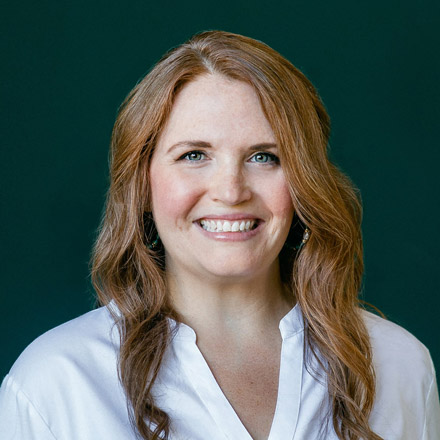Newborn Tests & Procedures
Babies and Bumps
March 10, 2024
If you’re preparing for a new baby, you may have heard about the flurry of tests and procedures performed on newborns the moments and hours after birth and wondered about them. What are they? Why are they performed? And most importantly, how can you balance these procedures with your preferences for immediate skin-to-skin contact and breastfeeding? The good news is that with the exception of measuring length and weight, all of these tests can (typically) happen while you hold your baby. But like many aspects of birth, it’s important to make sure your healthcare team is aware of your preferences upfront and that you’re confident about how to advocate for yourself and your baby.
In hospital births, it’s been customary for newborns to immediately be taken from their mother for these tests. But in recent years, they’re increasingly being left on mom’s belly or chest to allow for delayed cord clamping, skin-to-skin contact, and early initiation of breastfeeding. In this article, I’ll walk through the most common tests and procedures performed on newborns and the reasons behind them.
Apgar Score Assessment
One of the first assessments your baby will undergo is the Apgar (pronounced APP-gahr) score. This test is typically performed within the first few minutes after birth, and again at five minutes. The first one provides an immediate evaluation of how well the baby handled birth, and the second evaluates how they’re adjusting to life outside the womb.
The Apgar score is an evaluation of your baby’s overall health and well-being as they relate to five key areas: appearance, pulse, grimace, activity, and respiration. Each category is scored on a scale of 0 to 2, with a maximum total score of 10 when added together. Apgar scores help healthcare providers quickly determine if your baby needs immediate medical attention for any reason.
Physical Examination
A thorough physical examination will also be performed. This includes checking vital signs like temperature, heart rate, and breathing rate, as well as examining the baby’s skin, eyes, ears, mouth, umbilical cord stump, and genitals. Your baby will also be weighed and measured.
Eye Ointment Application
To prevent eye infections caused by certain bacteria, newborns are routinely given antibiotic eye ointment shortly after birth. This preventive measure helps protect baby’s eyes from potential infection and inflammation, particularly if mom tested positive for certain sexually transmitted infections, such as chlamydia or gonorrhea.
Vitamin K Injection
Newborns are typically born with low levels of vitamin K, which is essential for blood clotting. To prevent a rare, but serious, bleeding disorder called vitamin K deficiency bleeding (VKDB), infants are routinely given a vitamin K injection shortly after birth. This injection helps ensure that your baby’s blood can clot effectively, reducing the risk of excessive bleeding.
It’s worth mentioning – and probably not surprising – that research has shown babies experience less pain and discomfort during injections if they’re received during skin-to-skin contact or while breastfeeding. These injections are typically given in the thigh within six hours of birth.
Hepatitis B Vaccination
Hepatitis is an infection of the liver caused by the Hepatitis B virus. In many countries, including the United States, a vaccine to prevent it is given as a series of three shots. Newborns receive the first within 24 hours of birth, the second at 1 to 2 months, and the final dose at 6 to 18 months. By vaccinating your baby shortly after birth, you can help protect them from this potentially life-threatening infection.
Newborn Screening Tests
Newborn screening tests, often referred to as heel-prick tests or newborn blood-spot tests, are performed to test for various genetic, metabolic, and congenital disorders that may not be apparent at birth. These tests typically involve pricking your baby’s heel to collect a small sample of blood, which is then analyzed in a laboratory.
The specific disorders screened for may vary depending on where you live, but common conditions include phenylketonuria (PKU), hypothyroidism, cystic fibrosis, and sickle cell disease. Early detection and treatment of these conditions can prevent serious health problems and improve long-term outcomes for your baby. These tests are done within a day or two of birth and before leaving the hospital (if that’s your birth place).
Remember, you play a crucial role in advocating for your baby’s health and well-being. Don’t hesitate to ask questions and voice any concerns you may have about the tests and procedures being performed. You have the right to informed consent, and your healthcare provider should explain each test and procedure to you in detail before proceeding.
I also can’t overemphasize that, with the exception of weighing and measuring, and in the absence of a medical emergency, all of these tests can be performed while you hold your baby. And the weighing and measuring can wait until about an hour after birth. Also, in most cases, you can hold your baby during these tests and procedures regardless of whether you had a vaginal or cesarean birth.
Gentle cesareans weren’t really a thing when my son was born in 2012, so my first time holding him was in the recovery room while he was swaddled. I can’t recall if it was later that night or the next day that we had our first skin-to-skin session (it was a blur!), but it certainly wasn’t right after he was born. I had a VBAC (vaginal birth after cesarean) with my daughter in 2014, and it was incredible to have her on my chest moments after she was born. I barely noticed the tests and procedures were being done because I was soaking up every second with her and recovering from labor and birth. I’ll always remember how peaceful she was and that she was able to breastfeed almost immediately.
